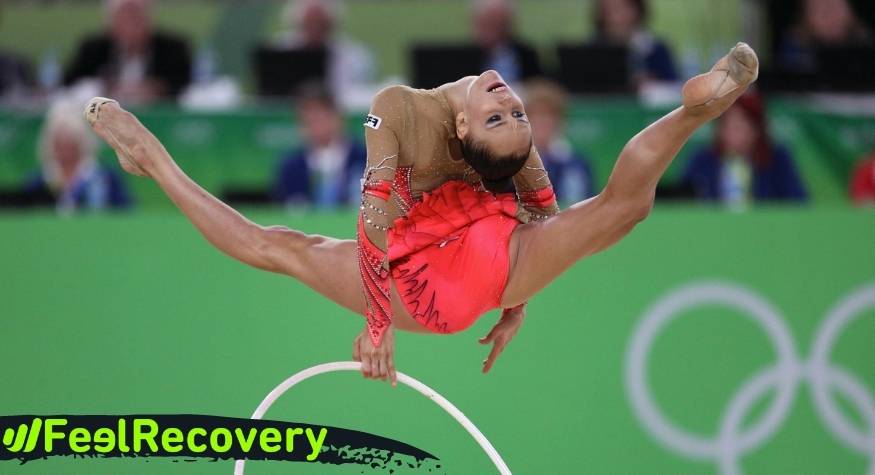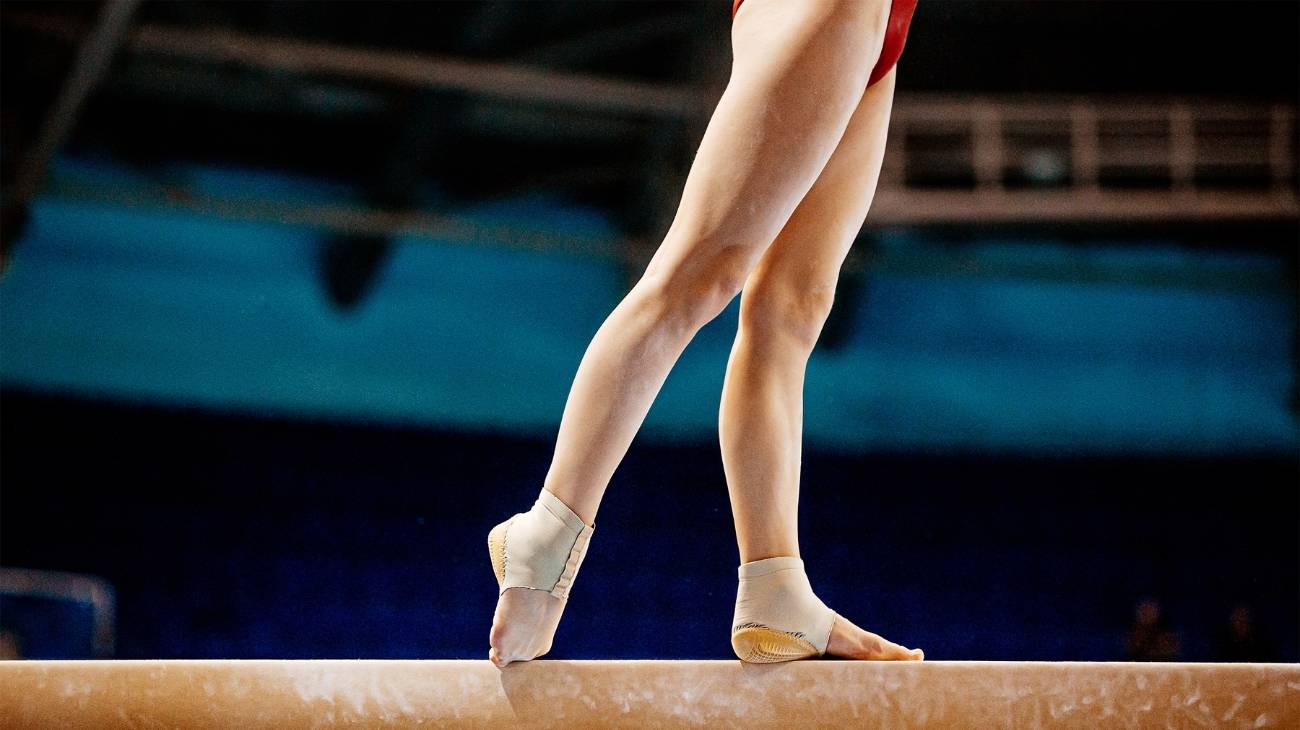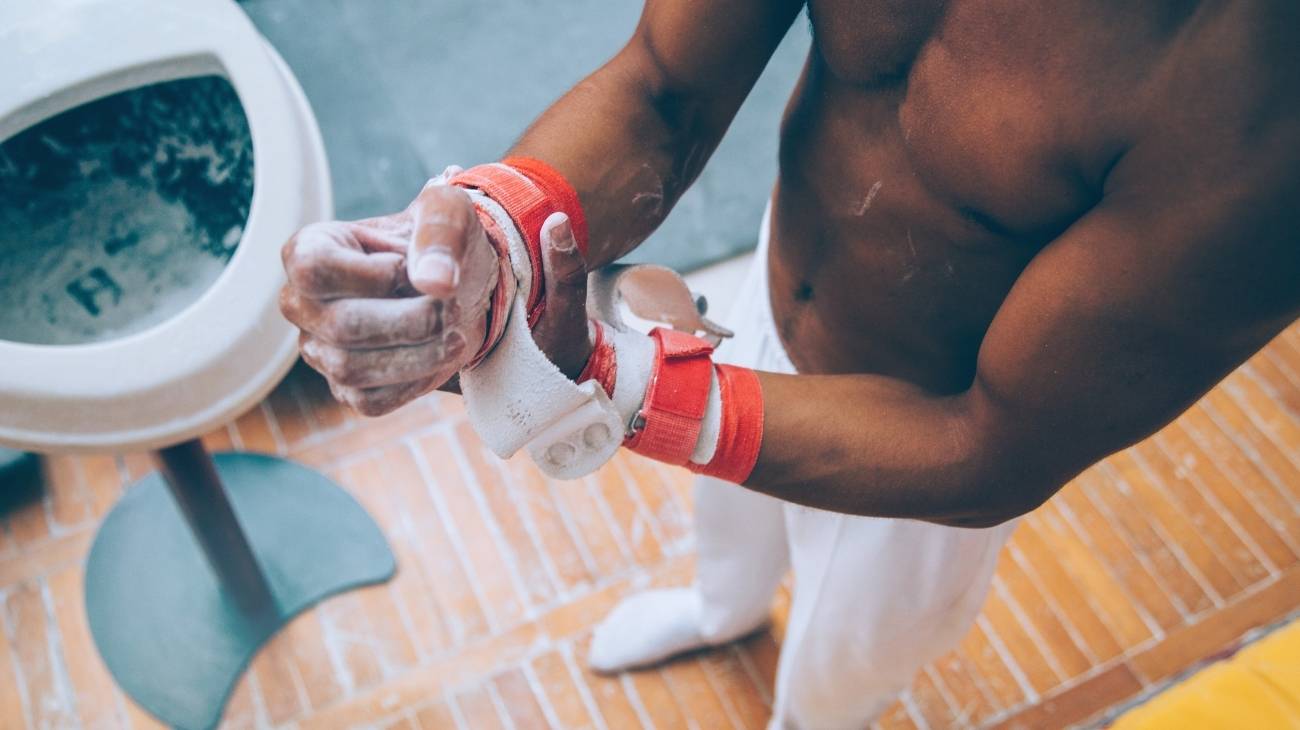Although it is associated with rhythm, beauty, aesthetics and perfection, few know what an athlete suffers when a back injury occurs. This occurs in 40% of all injuries in amateur or professional gymnastics.
Wear and tear and muscle fatigue, as well as hard falls are the main reasons for them. Here is a list of the most common back injuries in gymnastics and how to adapt the PRICE method to help an injury.
What are the most common types of gymnastics back injuries?
The gentle but complex movements mesmerise gymnastics followers, but for the athlete they are not always fun. Women are the ones who suffer most from back injuries as they have a less resistant musculoskeletal structure than men. Among the most common ailments are the following.
Lumbar hyperlordosis
When there is weakening and little training in the abdominal and back muscles, this injury is generated, which consists of an increase in the lower back cavity, at the height of the lumbar area.
It also occurs due to an inadequate posture or a posture that should have been better practised in training, prior to a competition. This ailment can be confused with a simple muscle contracture, but lumbar hyperlordosis is more complex to deal with.
Muscle contracture
This is an involuntary reaction of the back muscles to excessive physical effort, perhaps caused by a bad warm-up before training or by sessions that are too intense for the gymnast's endurance.
Part of the origin of a contraction is due to poorly executed positions, sudden movements in areas where there has already been an injury, and accumulated tension from a bad warm-up. A good massage can reduce the pain and inflammation and then return to stretching exercises.
Strains
In gymnasts who are in good physical condition, strains are less likely to occur. That's why it's important to train consistently. Strains are partial tears of the back muscles. They are caused by overloading the muscles with energy or tension in modalities such as sports hoops. It usually only takes about four weeks to relieve a mild strain.
Compression fractures
Only an X-ray can show how many vertebrae are involved in such an injury. The most vulnerable areas of the spine collapse under the energy overload of a full routine of intense, explosive movements performed during a gymnast's training or performance.
The back supports the entire weight of the body, and the twists and turns performed by gymnasts increase this stress exponentially, so if you don't have a strong muscular structure it is easy to get injured.
Neck pain
"Whiplash" often occurs, making the neck more sensitive and causing severe headaches to invade your peace of mind. Cervical discomfort is caused by a bad manoeuvre that creates tension in the back of the neck.
It is important to practice a lot before performing a routine in its entirety. Generally with rest and a good massage, athletes recover from this injury, which can worsen if several days go by without specialised attention.
Bruising
You may think of bruises on the skin as bruises caused by broken blood vessels, but a contusion is more than that. It is generated when muscles, bones and organs suffer from a heavy blow against the rack or bars, or some unfortunate falls. It is a common injury in beginners. Rest and a visit to your sports doctor is the best recommendation we can offer you in this article.
Best products for the recovery of back injuries in gymnastics
Bestseller
-
Acupressure Mat and Pillow (Black/Gray)
$49.95 -
Acupressure Mat and Pillow (Green/Navy)
$49.95 -
Acupressure Mat and Pillow (Pink/Bordeaux)
$49.95 -
Acupressure Pillow (Black/Gray)
$29.46 -
Acupressure Pillow (Green/Navy)
$29.46 -
Acupressure Pillow (Pink/Bordeaux)
$29.46 -
Back Support Belt (Black)
$34.95 -
Back Support Belt (Green)
$34.95 -
Back Support Belt (Pink)
$34.95 -
Heating Pad for Microwave Classic Bottle Shaped (Hearts)
$19.95 -
Heating Pad for Microwave Classic Bottle Shaped (Oxford)
$19.95 -
Heating Pad for Microwave Classic Bottle Shaped (Sport)
$19.95 -
High Density Foam Roller for Muscle (Black/Gray)
$29.95 -
High Density Foam Roller for Muscle (Green/Navy)
$29.95 -
High Density Foam Roller for Muscle (Pink/Bordeaux)
$29.95 -
Ice Massage Roller Ball (Black)
$39.95 -
Ice Massage Roller Ball (Green)
$39.95 -
Ice Massage Roller Ball (Pink)
$39.95 -
Microwave Heating Pad for Back Pain Relief (Extra Large) (Hearts)
$29.95 -
Microwave Heating Pad for Back Pain Relief (Extra Large) (Oxford)
$29.95 -
Microwave Heating Pad for Back Pain Relief (Extra Large) (Sport)
$29.95 -
Microwave Heating Pad for Neck & Shoulder Pain Relief (Hearts)
$24.95 -
Microwave Heating Pad for Neck & Shoulder Pain Relief (Oxford)
$24.95 -
Microwave Heating Pad for Neck & Shoulder Pain Relief (Sport)
$24.95 -
Microwaveable Heating Pad for Pain Relief (Hearts)
$19.95 -
Microwaveable Heating Pad for Pain Relief (Oxford)
$19.95 -
Microwaveable Heating Pad for Pain Relief (Sport)
$19.95 -
Pack 2 In 1 Foam Roller High + Soft Density (Black/Gray)
$29.95 -
Pack 2 In 1 Foam Roller High + Soft Density (Green/Navy)
$29.95 -
Pack 2 In 1 Foam Roller High + Soft Density (Pink/Bordeaux)
$29.95 -
Sacroiliac Support Belt (Black)
$24.95 -
Sacroiliac Support Belt (Green)
$24.95 -
Sacroiliac Support Belt (Pink)
$24.95 -
Soft Density Foam Roller for Recovery (Black)
$29.95 -
Soft Density Foam Roller for Recovery (Green)
$29.95 -
Soft Density Foam Roller for Recovery (Pink)
$29.95 -
Trigger Point Massage Stick (Black)
$14.95 -
Trigger Point Massage Stick (Green)
$14.95 -
Trigger Point Massage Stick (Pink)
$14.95
How to apply the RICE therapy to treat back injuries in sports gymnastics?
Whether in the short, long or medium term, a sports injury needs to be treated and the sooner you do it the better. That's why we show you what you need to do to apply first aid. The PRICE therapy is an important update of the RICE therapy, as it is better known in the sporting world.
- Protection: When you choose to apply this method, you should start by protecting the injured area with a classic bandage or belt that covers the entire lower back. This will prevent a sudden movement from causing a new muscle injury.
- Rest: Stopping activity completely is contraindicated, but you want to reduce movements to a minimum until the muscles, tissues and ligaments of the back or lower back begin to relax. Tissue regeneration occurs at this stage, when there are no moderate movements that cause more discomfort.
- Ice: This is a therapy that uses cold on the skin, although not directly to avoid reddening and first-degree burns that worsen the condition. Use an ice pack the size of your hand to cover as much of the back as possible.
- Compression: Acompression garment is the ideal tool to maintain moderate pressure on the injury, without cutting off blood flow completely. This way we control inflammation and allow the body to continue its muscle recovery.
- Elevation: In this case elevation does not apply and we must be consistent with the previous steps to achieve a good result. The only similar thing we can do is to lie on our stomach and put a cushion on the pelvis to keep the lumbar area raised in case of a lower back injury.
References
- Micheli, L. J. (1985). Back injuries in gymnastics. Clinics in sports medicine, 4(1), 85-93. https://europepmc.org/article/med/3155669
- Hutchinson, M. R. (1999). Low back pain in elite rhythmic gymnasts. Med Sci Sports Exerc, 31(11), 1686-8. https://sponet.fi/Record/4002244
- Harringe, M. L., Halvorsen, K., Renström, P., & Werner, S. (2008). Postural control measured as the center of pressure excursion in young female gymnasts with low back pain or lower extremity injury. Gait & posture, 28(1), 38-45. https://www.sciencedirect.com/science/article/abs/pii/S0966636207002536
- Bennett, D. L., Nassar, L., & DeLano, M. C. (2006). Lumbar spine MRI in the elite-level female gymnast with low back pain. Skeletal radiology, 35, 503-509. https://link.springer.com/article/10.1007/s00256-006-0083-7
- Kruse, D., & Lemmen, B. (2009). Spine injuries in the sport of gymnastics. Current sports medicine reports, 8(1), 20-28. https://journals.lww.com/acsm-csmr/Fulltext/2009/01000/Spine_Injuries_in_the_Sport_of_Gymnastics.00008.aspx
- Meeusen, R., & Borms, J. (1992). Gymnastic injuries. Sports Medicine, 13, 337-356. https://link.springer.com/article/10.2165/00007256-199213050-00004
- Caine, D. J., & Nassar, L. (2005). Gymnastics injuries. Epidemiology of pediatric sports injuries: individual sports, 48, 18-58. https://www.karger.com/Article/Abstract/84282
- Garrick, J. G., & Requa, R. K. (1980). Epidemiology of women’s gymnastics injuries. The American journal of sports medicine, 8(4), 261-264. https://journals.sagepub.com/doi/abs/10.1177/036354658000800409
- Sands, W. A., Shultz, B. B., & Newman, A. P. (1993). Women’s gymnastics injuries: a 5-year study. The American journal of sports medicine, 21(2), 271-276. https://journals.sagepub.com/doi/abs/10.1177/036354659302100218
- Caine, D., Cochrane, B., Caine, C., & Zemper, E. (1989). An epidemiologic investigation of injuries affecting young competitive female gymnasts. The American journal of sports medicine, 17(6), 811-820. https://journals.sagepub.com/doi/abs/10.1177/036354658901700616
































































